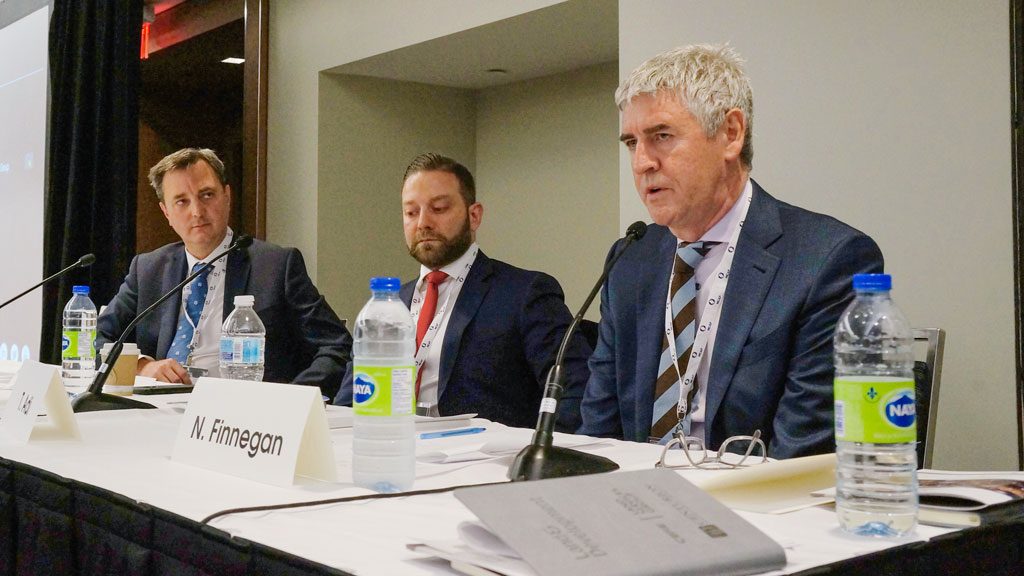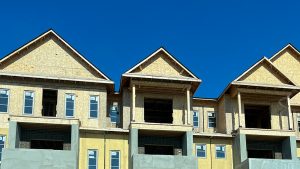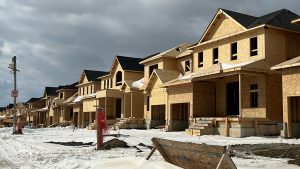Over the past 3.5 years construction costs have soared in Toronto, with the leading sector — highrise residential — jumping by as much as 30 to 35 per cent. It has made it increasingly difficult for developers to control costs — especially on projects with a two-year time lag.
Sage advice? Don’t presell residential units until zoning is in place. That minimizes unforeseeable construction cost hikes, said Tariq Adi, president of Adi Development Group, a Burlington, Ont.-based luxury home builder.
Adi was one of three panelists at a seminar on escalating construction costs and innovative solutions at the Land & Development Conference recently in downtown Toronto.
The panel moderator, David Schoonjans, said, “It has almost become a core competency to be able to shorten that time period between (unit) sales and construction starts.”
Schoonjans, senior director in cost consulting at Altus Group, said Altus commissioned a study that concluded one of the biggest challenges facing developers globally over the next five years will be rising construction costs.
“It’s been a very acute issue in Toronto, especially over the past 12 to 18 months,” he said, noting that while some future indicators suggest the prices could continue to soar, others point to a slowdown.
Panelist Niall Finnegan, co-founder of Finnegan Marshall Inc., which does development cost consulting, believes construction costs will start to level off. With residential sales down about 20 per cent from the peak in 2017, “naturally we are going to have a correction (softening in costs),” Finnegan told the seminar audience.
It won’t happen this year, however, but his experience suggests that corrections “happen very quickly in the construction industry.”
Adi said there are signs the costs could soften. “We are seeing the trades calling us now. I think that a lot of the (project) cancellations that occurred due to (cost) escalations have freed up some capacity for some of those trades.”
Still, some developers need to rethink their relationships with builders.
“Engage very, very early (up to a year-and-a-half before project start) with key trades,” advised Finnegan.
The days of expecting a project to start on time “simply by requesting consultants to send completed drawings out to six bidders” are over, he told the seminar audience. Those trades will have other work on the go.
Finnegan said carefully select a construction manager and bear in mind that the trades are in the position to interview you about your project.
Adi said his company keeps a handle on costs partly by having an in-house structural engineering team to improve efficiencies and the developer self-performs some “key functions” during construction to keep costs down.
Lack of operational excellence is probably adding 10 to 20 per cent in costs,
— Tariq Adi
Adi Development Group
Finnegan said while highrise costs have been over 30 per cent since 2016, lowrise and ICI construction costs have jumped about 15 per cent.
In residential, the cost of concrete formwork has risen by more than 30 per cent — a key factor in rising costs, said panelist Phil Pavitt, director, BTY Group, which performs risk management assessments.
HVAC (mechanical) costs are up about 30 per cent while rebar and glazing have jumped about 20 percent in the past three years, Pavitt added.
Site servicing costs are also up, said Adi, noting that the typical lot servicing charges of $25,000 to $35,000 are now $45,000 to $50,000 because of limited trades availability. “We’re in a market where they are calling the price.”
Finnegan links construction costs in the highrise market to the number of construction starts from the past 12- to 18-month period: the higher the number of sales, the higher the costs.
Adi said low production rates that include rework and trade inefficiencies in the building industry are keys to high costs. “Lack of operational excellence is probably adding 10 to 20 per cent in costs.”
Pavitt pointed out that mass timber construction is an example where prefabrication plays a key role in helping to deliver projects quickly with less construction waste.
Adi said his engineers design efficiencies, including panelization in lowrise residential, which costs more upfront but speed up the construction process. Using mobile concrete forms as well shortens construction schedules.
Finnegan said exterior insulated wall systems that incorporate windows are a good example of a shift into prefabrication, but not many trades can take advantage of modular construction methods.
He said that rising soft costs are also a big factor in the highrise sector. When he first started working in Toronto 35 years ago, soft costs were about 30 per cent of hard costs. Today they are closer to 75 per cent.
He blamed the increase city development charges, land costs, school board levies and commissions on higher sales prices.











Recent Comments
comments for this post are closed